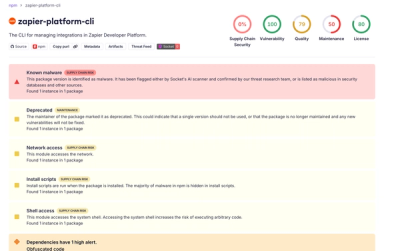GramJS
A Telegram client written in JavaScript for Node.js and browsers, with its core being based on
Telethon.
How to get started
Here you'll learn how to obtain necessary information to create telegram application, authorize into your account and send yourself a message.
Note that if you want to use a GramJS inside of a browser, refer to this instructions.
Install GramJS:
$ npm i telegram
After installation, you'll need to obtain an API ID and hash:
- Login into your telegram account
- Then click "API development tools" and fill your application details (only app title and short name required)
- Finally, click "Create application"
Never share any API/authorization details, that will compromise your application and account.
When you've successfully created the application, change apiId and apiHash on what you got from telegram.
Then run this code to send a message to yourself.
import { TelegramClient } from "telegram";
import { StringSession } from "telegram/sessions";
import readline from "readline";
const apiId = 123456;
const apiHash = "123456abcdfg";
const stringSession = new StringSession("");
const rl = readline.createInterface({
input: process.stdin,
output: process.stdout,
});
(async () => {
console.log("Loading interactive example...");
const client = new TelegramClient(stringSession, apiId, apiHash, {
connectionRetries: 5,
});
await client.start({
phoneNumber: async () =>
new Promise((resolve) =>
rl.question("Please enter your number: ", resolve)
),
password: async () =>
new Promise((resolve) =>
rl.question("Please enter your password: ", resolve)
),
phoneCode: async () =>
new Promise((resolve) =>
rl.question("Please enter the code you received: ", resolve)
),
onError: (err) => console.log(err),
});
console.log("You should now be connected.");
console.log(client.session.save());
await client.sendMessage("me", { message: "Hello!" });
})();
Note that you can also save auth key to a folder instead of a string, change stringSession into this:
const storeSession = new StoreSession("folder_name");
Be sure to save output of client.session.save() into stringSession or storeSession variable to avoid logging in again.
Running GramJS inside browsers
GramJS works great in combination with frontend libraries such as React, Vue and others.
While working within browsers, GramJS is using localStorage to cache the layers.
To get a browser bundle of GramJS, use the following command:
NODE_ENV=production npx webpack
You can also use the helpful script generate_webpack.js
node generate_webpack.js
Calling the raw API
To use raw telegram API methods use invoke function.
await client.invoke(new RequestClass(args));
Documentation
General documentation, use cases, quick start, refer to gram.js.org, or older version of documentation (will be removed in the future).
For more advanced documentation refer to gram.js.org/beta (work in progress).
If your ISP is blocking Telegram, you can check My ISP blocks Telegram. How can I still use GramJS?
Ask a question
If you have any questions about GramJS, feel free to open an issue or ask directly in our telegram group - @GramJSChat.
what do you mean by that ?
If you want to update to a specific layer yourself there are 4 things you need to do.
you update export const LAYER = 181; in gramjs/tl/AllTLObjects
Then you update gramjs/tl/static/api.tl with the one from tdesktop (the one you sent a link to)
Then you do ts-node gramjs/tl/generateModule.js
Then you finally do ts-node gramjs/tl/types-generator/generate.js
node publish_npm.js



